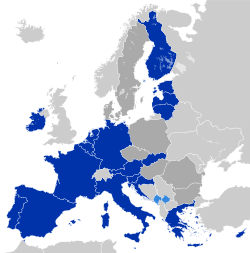| |
|---|---|
 Countries involved in the treaty, with newly joining countries in yellow, countries who did not join in red, and existing EU countries in blue. | |
| Signed | 24 July 1994 |
| Location | Corfu, Greece |
| Effective | 1 January 1995 |
| Condition | Ratification by Norway, Austria, Finland or Sweden and all 12 Member States of the European Union |
| Signatories |
|
| Ratifiers | 15 / 16 |
| Depositary | Government of the Italian Republic |
| Languages | All 9 official Languages of the European Union, Norwegian, Finnish and Swedish |
| This article is part of a series on |
 |
|---|

The Treaty of Accession 1994 was the agreement between the member states of the European Union and four countries (Norway, Austria, Finland and Sweden), concerning these countries' accession into the EU. It entered into force on 1 January 1995. The Treaty arranged accession of Austria, Finland and Sweden to the EU and amended earlier Treaties of the European Union. As such it is an integral part of the constitutional basis of the European Union. Norway failed to join the EU because its referendum did not pass. [1] [2]



